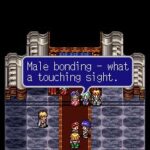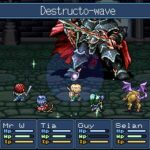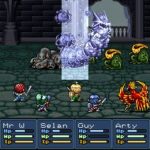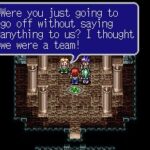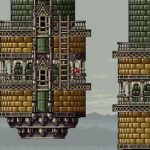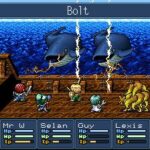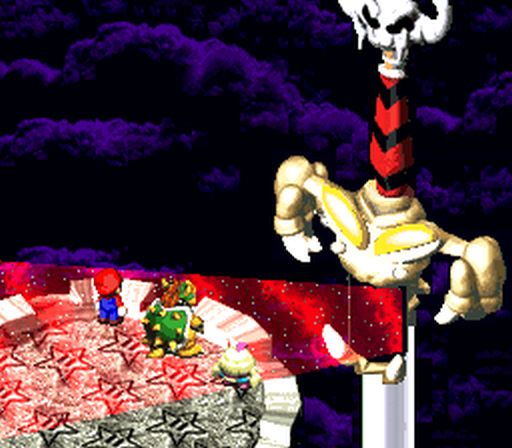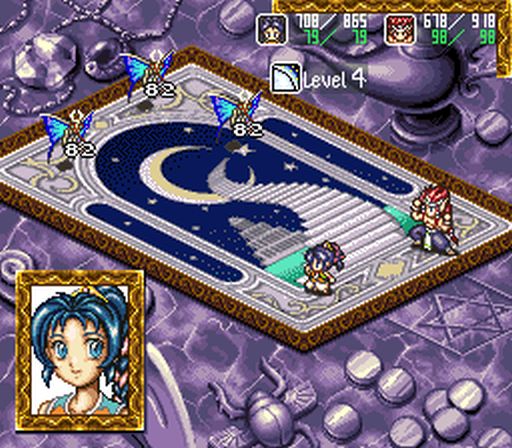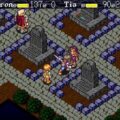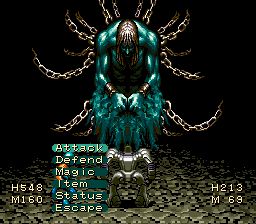Developer: Neverland Publisher: Natsume Release: 08/31/96 Genre: RPG
The SNES was home to many late generation RPG classics like Chrono Trigger and Final Fantasy VI. While it paled in comparison to what Japan was receiving as late as 1997 considering the climate for the genre at the time we were grateful for everything we got. But by 1996 as the SNES was winding down the epics became few. Natsume graced us with one last classic in Lufia II. Despite its low profile all these years Lufia II deserves to be mentioned in the same breath as the two previously mentioned games as it is fantastic.
Despite the numeral in the title Lufia II is actually a prequel to the first game. The game tells the story of Maxim, the hero in the original game’s prologue. Maxim is a monster hunter in the town of Elcid who has noticed the increasing number of demons. This seemingly innocent fact is a preface to the rise of evil gods known as Sinistrals who soon begin to plague the world. As one of the few people with the power to fight these beings on even ground Maxim travels the world to gather like-minded comrades to hopefully end this threat.
The story is one of Lufia II’s best aspects. Those that played Lufia already know how it ends. But learning about the events leading up to the climactic battle depicted in that game’s opening is fun. Maxim is remembered as a legend but here he is depicted as a hero with questions about his place in the world. You know that he eventually marries Selan. But watching their relationship grow to reach that point and the ups and downs along the way is well done. The character personalities are varied and the playable cast is larger than expected. Overall the localization is adequate. The writing is not up to the level of Working Designs or Squaresoft’s work but far better than the likes of Secret of the Stars. There are typos and odd phrasing but nothing that is too distracting. We were lucky to get the game at all.
Lufia II is a large departure from its predecessor in a few ways. The biggest is in terms of its dungeons. On the overworld map battles are still random. In dungeons enemies are visible. This is to better facilitate the puzzle focused nature of its dungeons. The game resembles the Legend of Zelda in this regard. Over the course of the game you will amass a number of tools, from bombs to arrows and even a hook shot. These are all used to solve the many, many puzzles throughout the game. Some are simple such as pushing blocks or arranging them in certain shapes. Others require use of multiple tools to navigate large rooms or complete puzzles across a series of floors. They can be downright clever and head scratching at times but thankfully the game almost always provides hints.
The decision to eliminate random battles in caves and such does wonders for the game’s pace. Without having to worry about random encounters every few steps you are free to explore each massive location for items. There are plenty of hidden items and optional puzzles, many of which are head scratchers. I will say that it can get tedious as much as I do like the game. Every dungeon is a multi-floor behemoth with some spanning as many as twelve or thirteen levels. The game revels in shoving in mandatory side missions that do nothing but waste your time. Sometimes you just want a straightforward cave without the brain teasers to continue the quest.
The battle system is largely the same although it has been spruced up quite a bit. The IP system is a gauge that fills during combat. Once full a character can use the IP skill associated with their equipped gear. A significant chunk of the game’s inventory has IP skills attached with a dazzling array of effects. Some of these are devastating against the correct enemy type and can trivialize certain encounters. They make the choice of upgrading equipment more interesting as a result. The other is the elemental capsule monsters. During the game you can find up to seven who are essentially a fifth party member. While they are AI controlled they are invaluable in taking out groups or soaking damage. By feeding them items they can radically evolve up to five times like Pokemon. It is a deep system that adds welcome depth to combat.
With an array of systems to partake in and a significantly better story Lufia II is a far better game than its at times generic predecessor. As much as I liked Lufia it was a by the numbers game that got by on charm. The sequel has far better production values, a more focused quest, and better mechanics to keep you engaged. There are plenty of optional side quests like Forfeit Island and the Egg Dragon. The most in depth is the Ancient Cave, a 99 level dungeon that could have been a game unto itself. It is a shame that the game was released so late in the SNES’ life, more people should know just how great it is.
In Closing
Lufia II: Rise of the Sinistrals is a phenomenal game and one of the best SNES RPGs released in the US. It excels in every category, from story to gameplay and is one of the last great games for the system in America. It is a bit hard to find now but worth the effort especially for those that played the first game and will appreciate the added context to its intro. I cannot recommend it enough.


